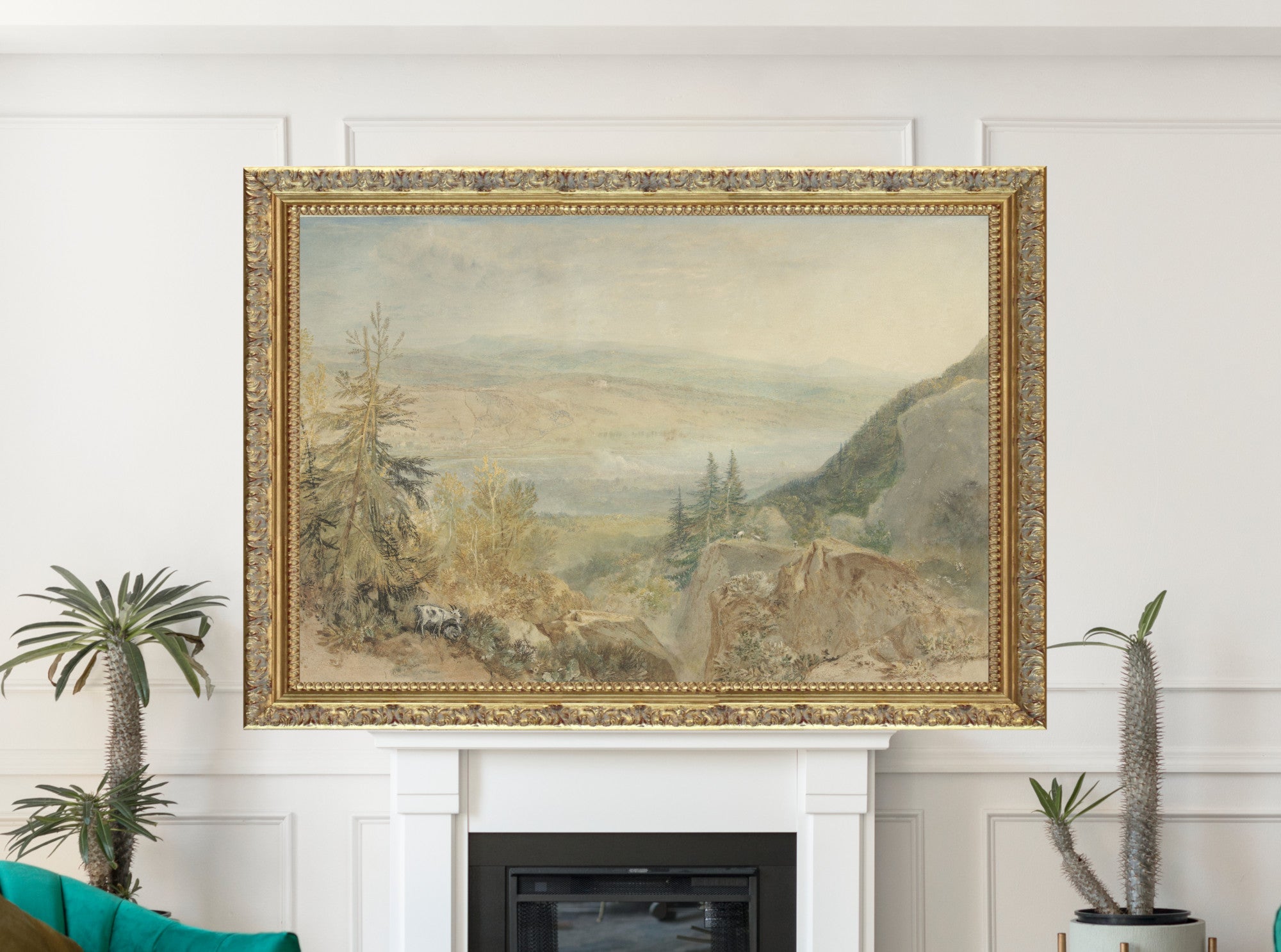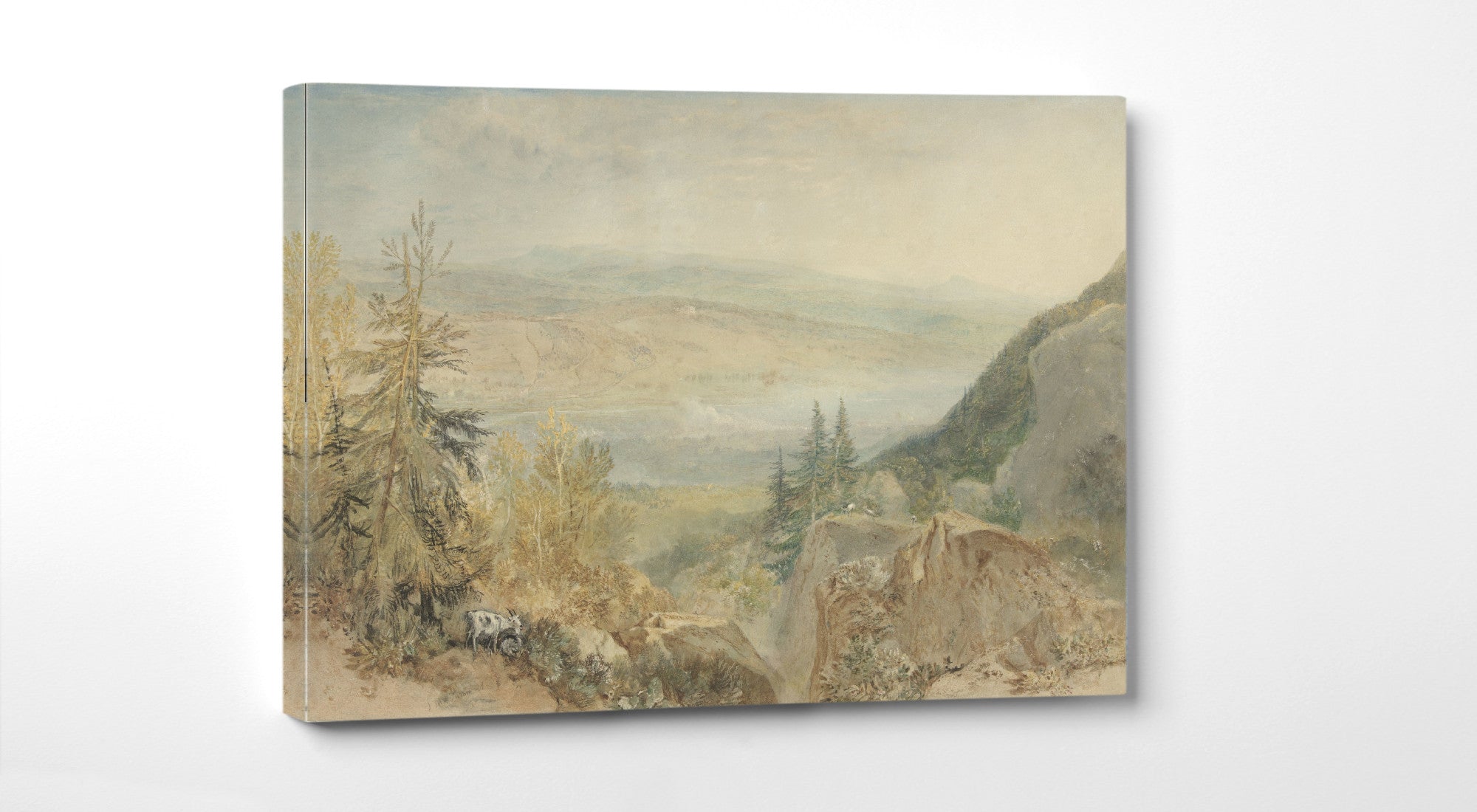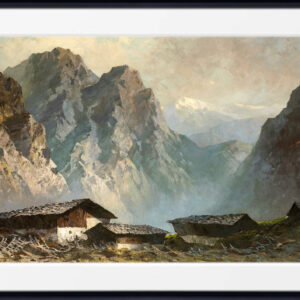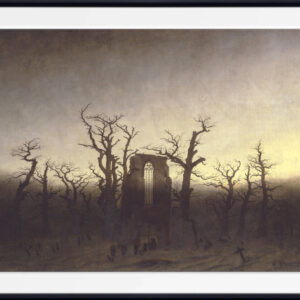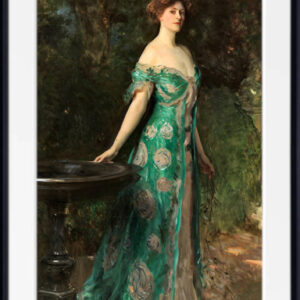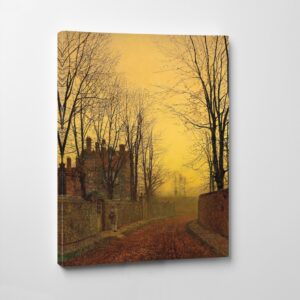View of Farnley Hall in Yorkshire by William Turner
View of Farnley Hall in Yorkshire by William Turner – Prints and Ready to Hang Canvas Panels
Turner’s Vision of Farnley Hall in Yorkshire
Joseph Mallord William Turner’s watercolour masterpiece, “View of Farnley Hall in Yorkshire,” transports viewers to the serene landscapes surrounding the home of his friend and collector, Walter Fawkes. This painting, created with meticulous artistry, captures the essence of Fawkes’s residence and the picturesque Yorkshire countryside.
A Glimpse into Turner’s Imagination
Turner’s rendition of Farnley Hall is a testament to his imaginative brilliance. While rooted in reality, this artwork is a free interpretation, highlighting Turner’s ability to infuse scenes with atmospheric light effects that evoke a sense of ethereal beauty. The distant view of Farnley Hall showcases Turner’s mastery of capturing architectural details amidst natural splendor.
Artistry in Process
Unlike plein air watercolourists, Turner crafted his scenes indoors. He meticulously based his work on drawn studies of nature, infusing each stroke with his deep understanding of light and shadow. Before the actual painting process, Turner would create a schematic colour sketch, ensuring every hue and tone harmonized flawlessly within the composition.
Capturing Nature’s Essence
In “View of Farnley Hall in Yorkshire,” Turner’s brushstrokes echo the tranquility of the Yorkshire countryside. The play of light on the landscape and the subtle interplay of colors bring the scenery to life. Through Turner’s keen artistic lens, viewers are transported to a moment frozen in time, where nature’s beauty and architectural grandeur coexist harmoniously.
Immerse yourself in Turner’s captivating vision of Farnley Hall, where artistry meets nature, and experience the timeless allure of Yorkshire’s landscapes through the eyes of a master painter.
Understanding William Turner’s Artistry
Joseph Mallord William Turner, a renowned English painter, left an indelible mark on the art world with his distinctive style and innovative techniques. His mastery of light, color, and atmosphere transformed landscapes into poetic expressions.
Innovative Techniques and Style
Turner’s innovative use of watercolors pushed the boundaries of traditional painting. He employed techniques like wet-on-wet and scraping to create luminous effects, giving his works an ethereal quality. His bold brushwork and vivid colors showcased nature’s dynamic beauty, capturing both its grandeur and subtleties.
Capturing Nature’s Essence
Turner had a unique ability to capture the essence of nature. His landscapes were not just literal representations but emotional experiences. Through skillful use of light and shadow, he infused his paintings with a sense of movement and life, making viewers feel the wind, hear the rustle of leaves, and sense the depth of the landscapes.
Symbolism and Narrative
Beyond the visual appeal, Turner’s paintings often carried symbolism and narratives. He conveyed powerful themes, such as the force of nature, the passage of time, and the human connection to the environment. His choice of subjects and compositions reflected his deep understanding of history, literature, and mythology, adding layers of meaning to his artworks.
Legacy and Influence
Turner’s innovative techniques and artistic vision had a profound influence on future generations of artists. His ability to convey emotion through landscapes paved the way for Impressionism and abstraction. Today, art enthusiasts and scholars continue to study Turner’s works, marveling at the timeless beauty and innovation that define his artistic legacy.
All prints are made using archival art stocks and UV pigment inks to give up to 200 years life. Prints are sold unframed and unmounted.


